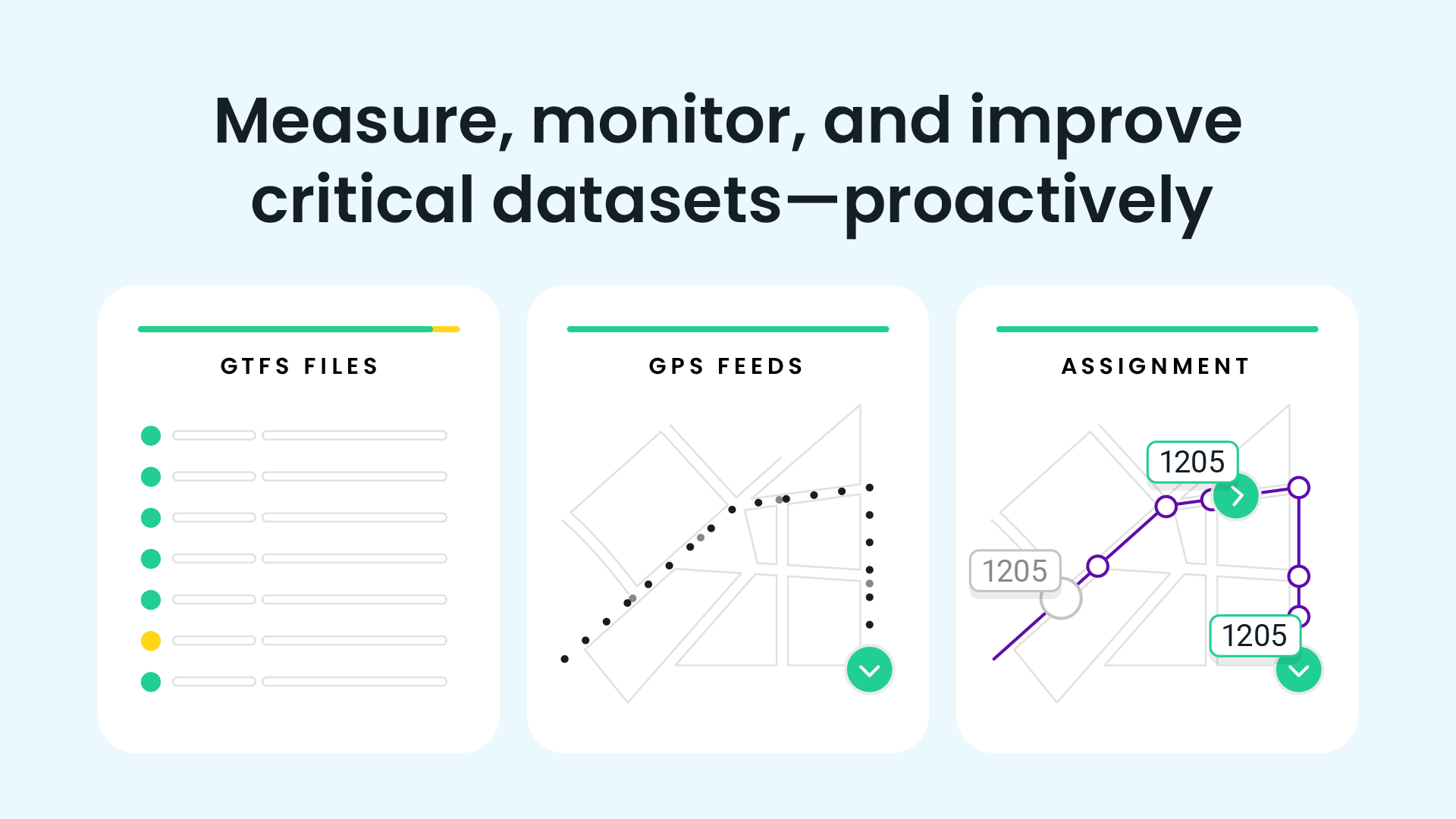
July 24, 2025
Prioritizing riders in times of budget uncertainty: 5 strategies to maintain trust
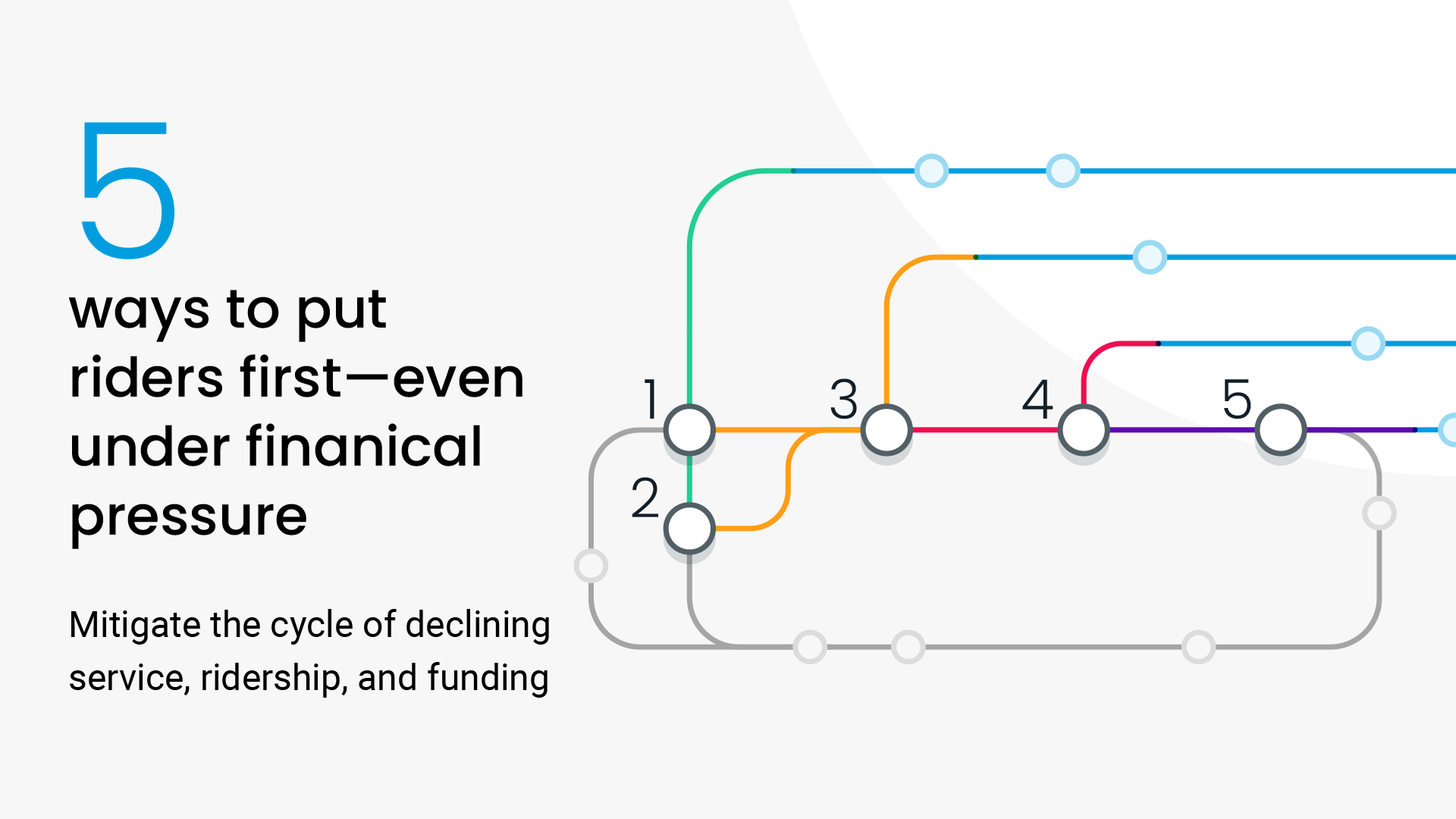
July 24, 2025
Prioritizing riders in times of budget uncertainty: 5 strategies to maintain trust
July 24, 2025
Prioritizing riders in times of budget uncertainty: 5 strategies to maintain trust
Executive summary
When transit agencies face budget uncertainty, agencies try everything in their power to avoid service cuts. Severe cuts can set off a “doom spiral” with riders: service is cut, reliability suffers, riders lose confidence, fare revenue declines, political pressure intensifies, budgets are reduced. Rinse, repeat.
In a fiscal environment where every dollar is scrutinized, the customer experience might seem like a luxury. It’s not. It’s the foundation. Here we’ve laid out five strategies agencies can take to prioritize the customer experience and minimize service cuts during times of financial strain.
Mitigating the impact of funding challenges
When budgets tighten, transit agencies face pressure to scale back service in the name of fiscal responsibility. But cutting service can carry hidden costs of its own. It sets off a chain reaction: the rider experience declines, ridership falls, fare revenues shrink, and public confidence erodes. The “doom spiral” accelerates, and with each turn, recovery becomes more difficult.
But this cycle isn’t inevitable. More and more agencies are finding creative ways to stretch limited resources and pursue alternatives before turning to service cuts. And when cuts are truly unavoidable, data-driven strategies are helping minimize the disruption and preserve rider trust and fare revenue, even under financial strain.
Read on to learn about the strategies agencies are putting into action today.
You can also set up a consultation with a Swiftly expert to learn how better transit data and tools can unlock more efficient service.
1. Agencies that calibrate schedules can save budget while improving reliability.
A penny saved is a penny earned, as they say, and public transit is no exception. But these savings don’t come from broad cuts. They’re hiding in the margins, in excessive slack, outdated traffic and ridership assumptions, and other mismatches between planned service with real-world conditions.
Over time, schedules drift out of sync with real-world operating conditions. Buffers once added to compensate for traffic or other delays can remain long after conditions improve. And in many cities, work-from-home habits have completely reshaped ridership and traffic since the pandemic. Running the same schedule Monday through Friday or scheduling around traditional peak hours, for example, no longer reflect how many riders actually move through transit systems.
These schedule gaps are costly, both in hard dollars and in missed opportunities to serve riders efficiently.
A growing number of agencies are responding by auditing and adjusting their schedules using historical performance data to realign their schedules with road conditions.
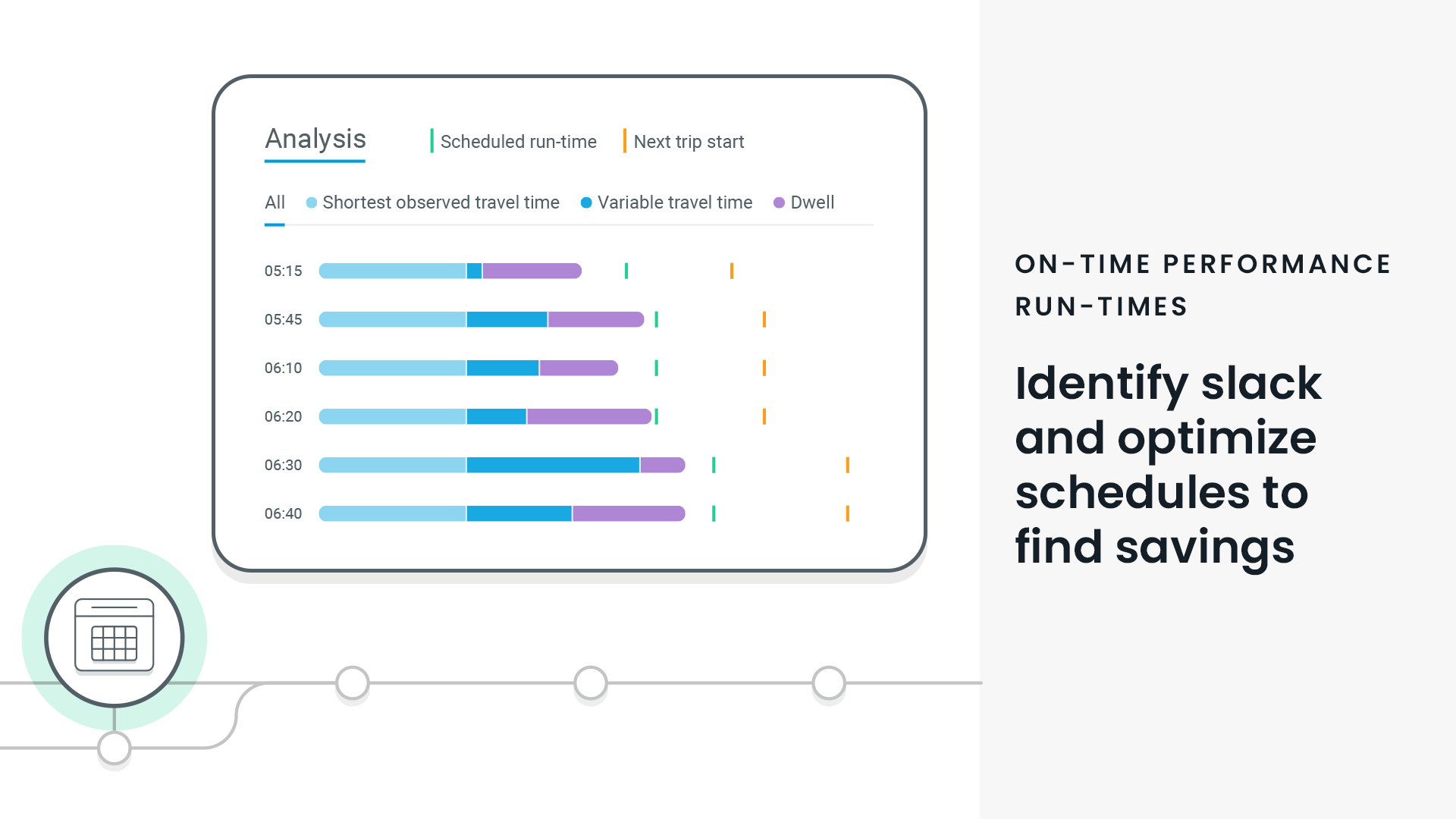
In their pursuit of more reliable service, County Connection in the Bay Area has invested in tools for planners and schedulers to analyze detailed run-time and on-time performance data.
“On-time performance has become more and more relevant in the post-pandemic world,” says Pranjal Dixit, Manager of Planning at County Connection.
“We’ve had challenges increasing service because of the operator shortage and increased traffic. It becomes even more important from a customer’s perspective to have very reliable transportation.”
County Connection now uses more accurate, granular data to inform schedule and route changes, improving on-time performance and optimizing run-times.
“With Swiftly, we get more detailed information on how the bus is performing from stop-to-stop, which is a very significant amount of data and is helpful,” Dixit shared. “We can analyze performance more deeply to see where delays are occurring and make those changes.”
US agencies can also look to their international counterparts to learn what has worked well. Oulu Public Transport Authority has successfully optimized service efficiency to provide the best possible service with limited resources. By using Swiftly’s Run-Times tool to recalibrate schedules, Oulu eliminated the need for two buses entirely on one of its main corridors, saving both budget and fleet capacity while maintaining reliable service.
“One of the biggest ways that Swiftly has helped us with cost savings,” explains Tomi Paananen, Public Transportation Planner in Oulu, “is by showing us that there is usually way too much overall run-time on a route. With Swiftly, we can update how we run our buses. A trip that used to take one hour now takes 50 minutes, meaning that we use fewer cars to provide the same level of service.”
These kinds of wins add up. By aligning schedules with real-world data, agencies can realize significant savings while improving reliability in the same stroke.
2. Agencies that invest in the operator experience can eliminate costly schedule padding.
Even the best-planned schedules depend on operators to make them real. But operators often lack the up-to-date information they need to stay on schedule. This is especially true during service disruptions like detours or road closures, where operators may have little support to navigate unfamiliar routes. Without a way to dynamically manage these situations, agencies frequently default to adding extra time as a buffer, increasing costs and reducing efficiency.
But many agencies are eliminating this costly buffer time by equipping operators with real-time navigation and schedule adherence tools.
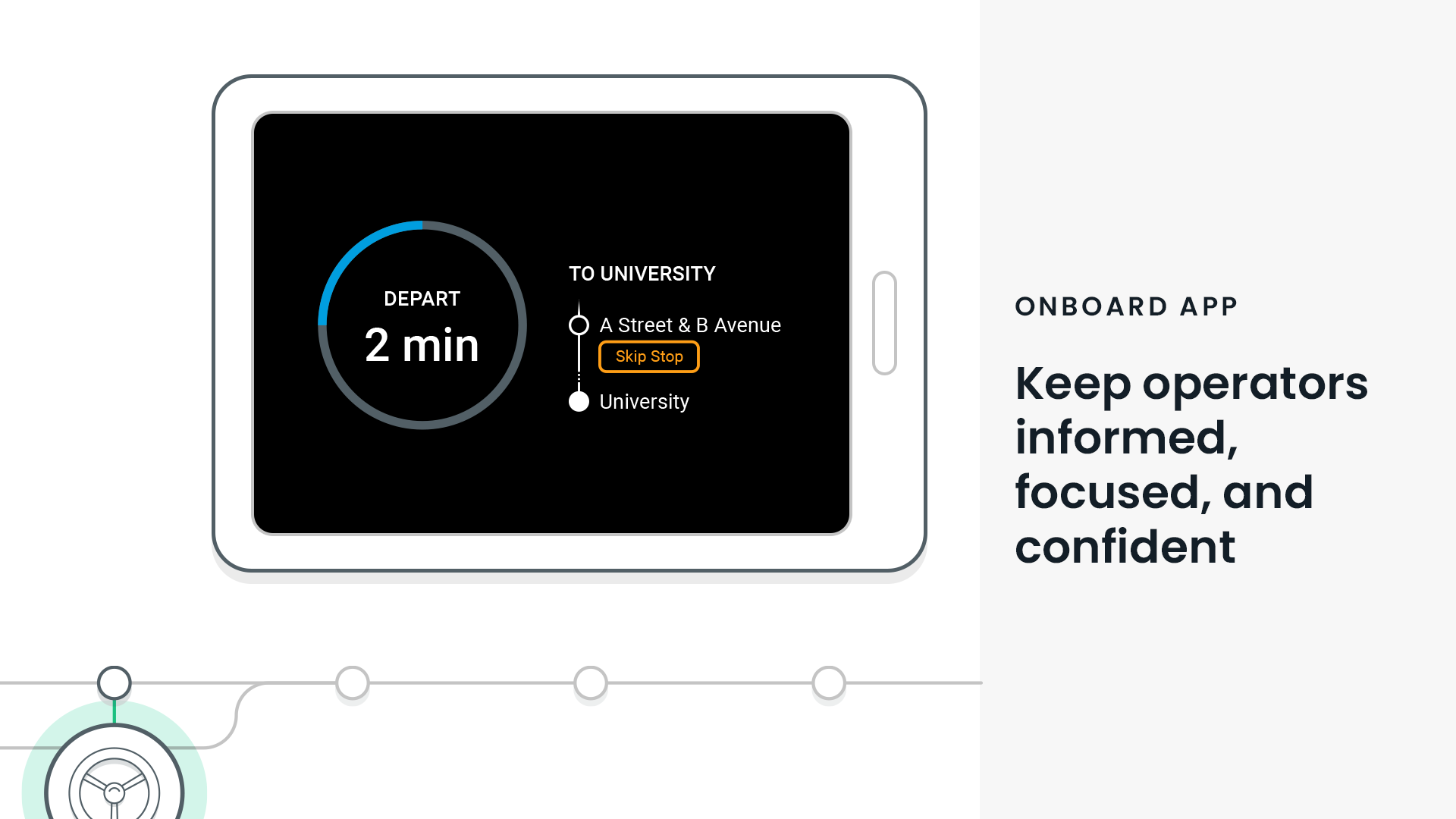
Denton County Transportation Authority (DCTA) in greater Dallas, for example, equipped operators with real-time schedule guidance through Swiftly’s Onboard App. That investment helped the agency maintain reliability and eliminate costly buffers by giving operators the information they needed to stay on track independently. When dispatch enacts detours, Onboard App instantly displays up-to-date schedule adherence and navigation guidance directly to operators in an onboard tablet. The result: significantly fewer off-route vehicles during detours, less dependence on radios, and reduced need for costly schedule buffers. On-time performance has improved by 18.6%, with early departures declining 55% on detoured service.
These types of investments in the operator experience pay dividends in the form of tighter schedules, reduced operational costs, and improved operator happiness. Win-win-win.
Request a demo
Build trust under financial pressure
3. When service cuts are inevitable, ridership insights can minimize negative impacts.
No agency wants to reduce service, but sometimes circumstances leave no alternative. In those tough moments, ridership data can hold important answers that inform trade-offs and minimize the negative impact.
Research shows that ridership responds predictably to service reductions and is highly correlated with how many riders are impacted and how often. Agencies can take advantage of this knowledge to minimize losses, but only if they have visibility into where riders are concentrated, where they’re going, and what routes they’re taking to get there.
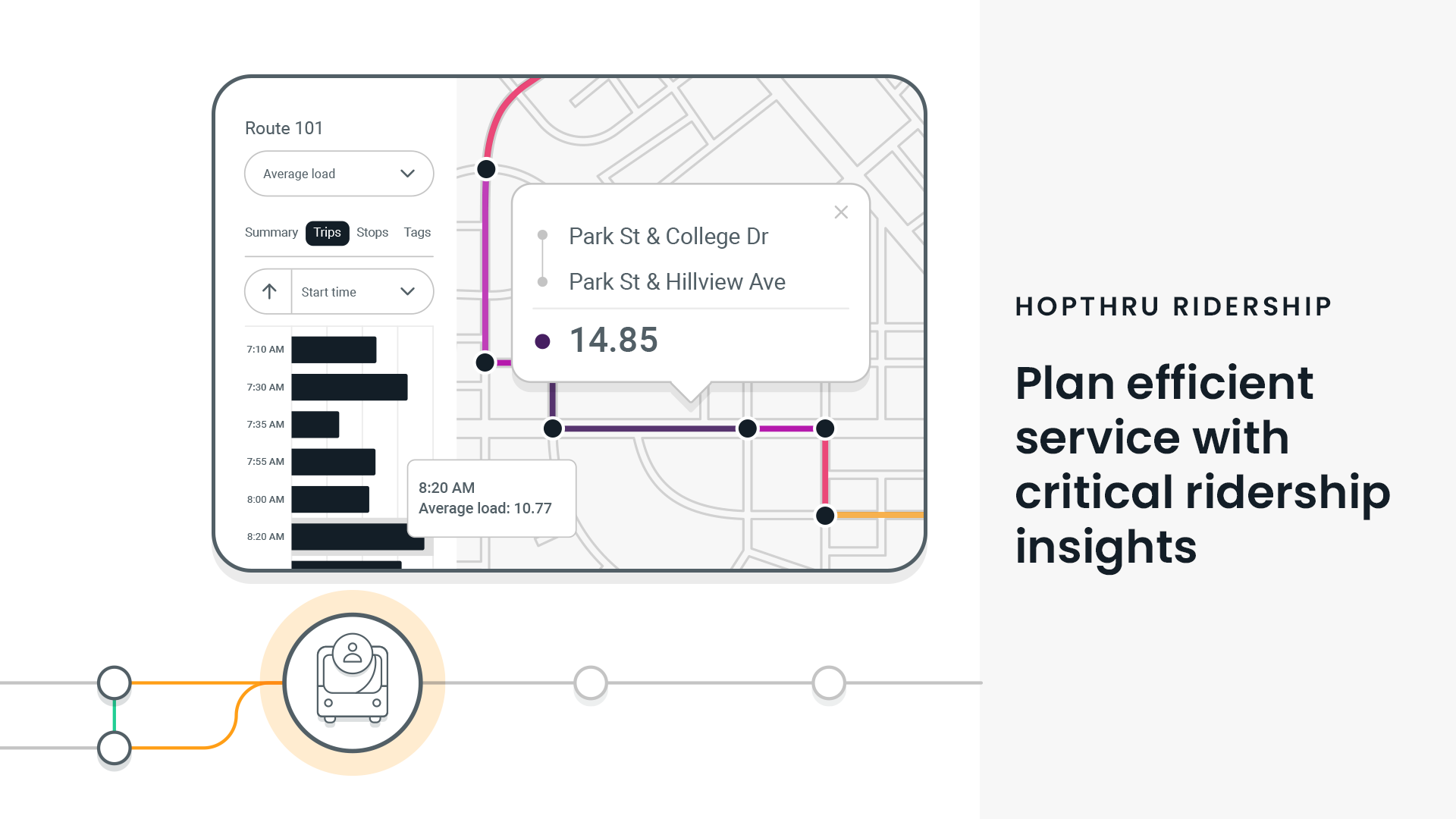
North County Transit District (NCTD) in the San Diego region exemplifies this approach. Using Hopthru Ridership, NCTD analyzed patterns on low-performing routes and used the data to justify a realignment. The result: a 47% increase in ridership on the adjusted line. Instead of resorting to broad service reductions, NCTD showed how targeted changes can both save resources and deliver better outcomes for riders.
Some agencies are taking this process a step further by analyzing ridership patterns in conjunction with excess run-times. By combining these two perspectives—where service is used most and where buffers are built in unnecessarily—agencies can achieve hyper-targeted service reductions that maximize cost savings while minimizing disruption for riders.
4. Accurate real-time information can preserve rider trust during service cuts.
In a world where instant updates are the norm, accurate real-time information is a core part of how riders experience reliability. In fact, research shows that many riders value accurate ETAs even higher than traditional reliability metrics like schedule adherence or headway spacing.
When service is reduced, these expectations don’t go away. Fewer trips mean fewer opportunities to catch the next bus, so knowing exactly when it’s coming matters that much more.
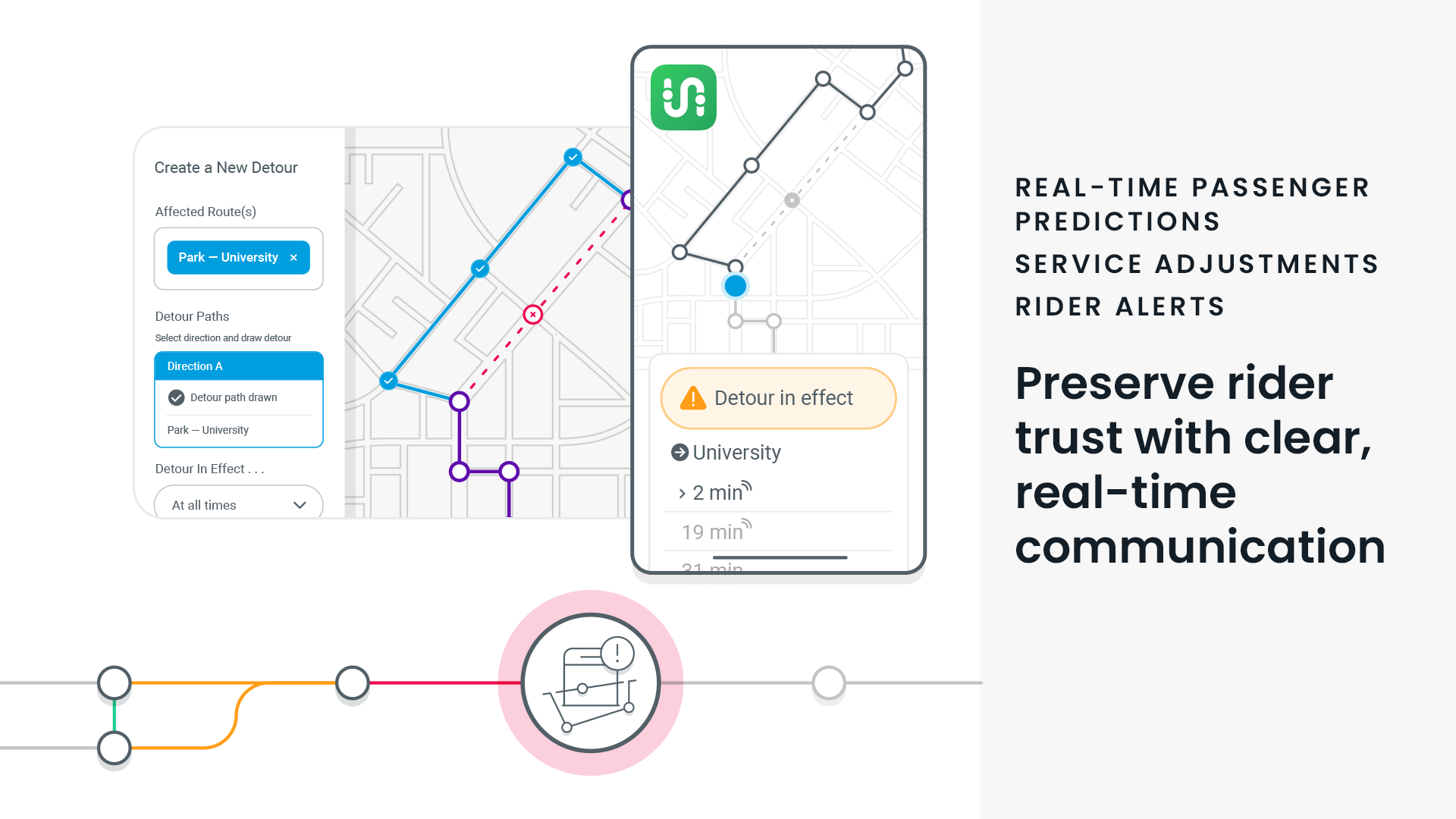
More accurate real-time passenger information can significantly move the needle on passenger satisfaction. For example, Pierce Transit in Tacoma invested in Swiftly’s Real-Time Passenger Predictions, and successfully improved prediction accuracy by nearly 50%. Agency staff noted a positive impact on the overall rider experience.
“Swiftly helps us foster a better public perception of our service,” said Christine Barry, Customer Service Assistant Manager at Pierce Transit. “The information really is real-time. It helps us to look like a better-informed agency as a whole.”
Agencies can also blunt the impact of service cuts by adopting a “publish once, appear everywhere” model. The RTC of Southern Nevada, for example, engages riders proactively during service disruptions, including when service is canceled, using Swiftly’s Service Adjustments and Rider Alerts to send out real-time notifications through their GTFS-rt feeds. The team at the RTC of Southern Nevada sends out nearly 2,000 rider alerts every month to offer information on how service is impacted.
For riders, that means fewer surprises and clearer expectations, especially when service is thinner or changing by the day. And for agencies, it means maintaining trust and rider confidence without adding staff or extra resources.
5. Trustworthy data is key when defending budgets.
It’s not just riders who demand reliability. It’s also city boards, local governments, and other holders of agency purse strings. The ability to speak confidently about service changes and associated impacts is what earns the credibility to retain budget while experimenting and finding what works.
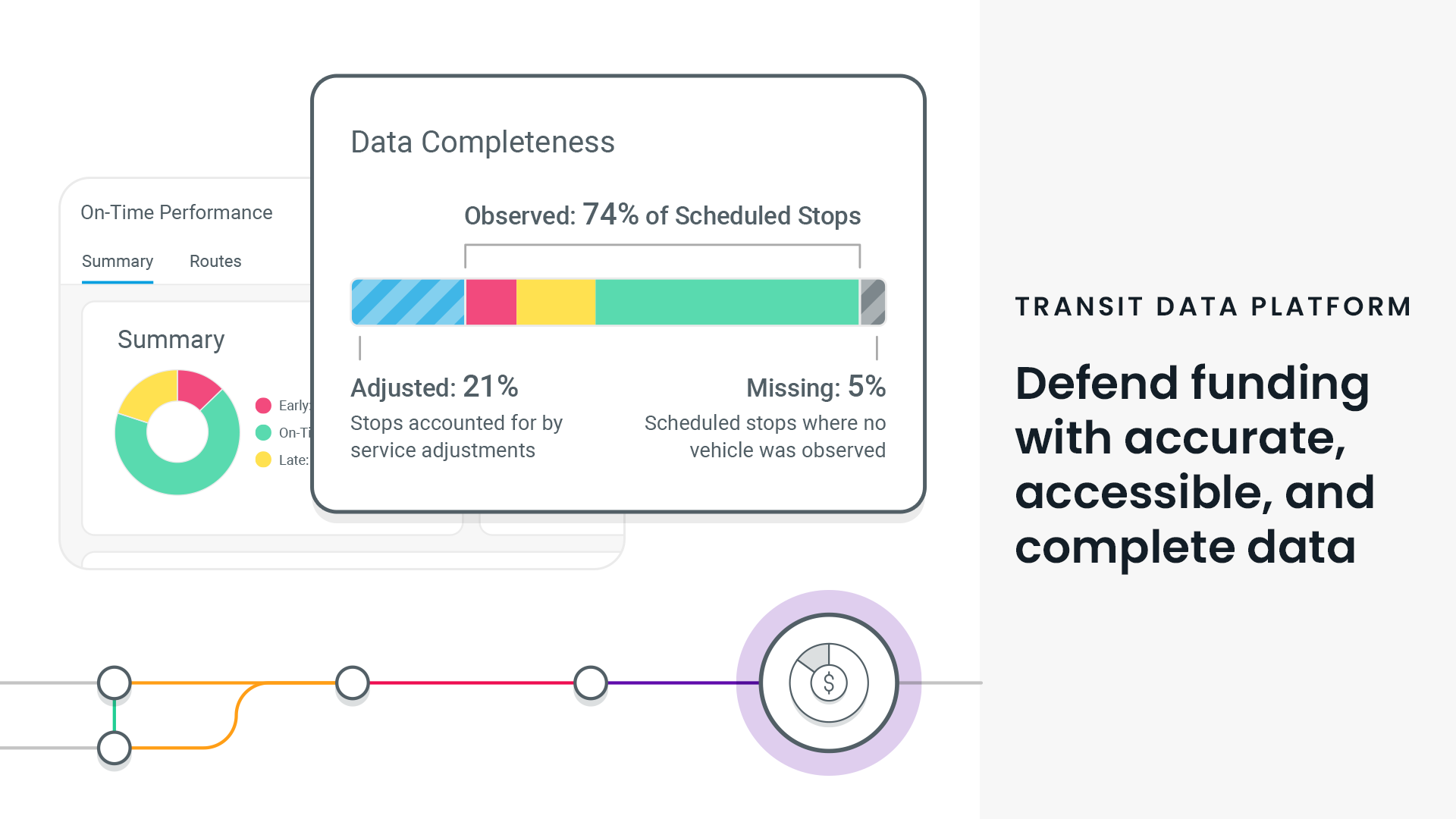
All previous strategies and this final one start with accurate, reliable data. For example, Valley Metro in Phoenix used a new, accurate data source from Swiftly to reset their relationship with stakeholders and create a new foundation to improve service reliability.
“We had challenges and endless meetings and disputes about assessing liquidated damages with our contractor based on what the true on-time performance was,” said Mike Pal, Chief Transportation Officer at Valley Metro.
“We saw Swiftly was accurate, and the legacy system could not calculate OTP because of geofence confusion and other issues. Once we started relying on Swiftly for our OTP measurement, we really built trust between our contractors and Valley Metro.”
Accurate, accessible data is the key to secure buy-in for changes, whether for the implementation of transformational projects or making small, iterative tweaks to service.
Miami-Dade Transit did both through the rollout of their Better Bus Network. With redesigned routes across the county, leadership needed to know whether their choices were delivering as intended. Using Swiftly’s On-Time Performance and Run-Times, the agency’s internal performance group could validate early wins within days.
“We would see that we’ve increased on-time performance ten points from this previous time,” said Linda Morris, Chief of Service Planning. “That was a really good, quick, and easy way of checking, ‘Did we get this right?’”
That kind of rapid validation, backed by clear metrics, strengthened internal alignment and armed leadership with the evidence to build the credibility needed to defend budgets.
They could show exactly where and how they were saving money through targeted adjustments. They could prove that changes were focused on preserving reliability for riders. And critically, they could back those claims with transparent metrics that helped earn trust from both leadership and the public.
The rider experience isn’t a luxury
When funding tightens, some things have to give. But the rider experience should never be one of them. It’s the clearest signal to riders that the system works as intended, and that it’s worth coming back to tomorrow.
Delivering efficient service isn’t about doing less. It’s about focusing on what matters: building schedules riders can trust, giving operators the tools they need, and maintaining reliable communication.
Swiftly helps agencies deliver on that promise. And in doing so, protects the one thing no transit system can afford to lose: public trust.
The rich text element allows you to create and format headings, paragraphs, blockquotes, images, and video all in one place instead of having to add and format them individually. Just double-click and easily create content.
Last Name, Agency

What’s a Rich Text element?
What’s a Rich Text element?
What’s a Rich Text element?
What’s a Rich Text element?
What’s a Rich Text element?
The rich text element allows you to create and format headings, paragraphs, blockquotes, images, and video all in one place instead of having to add and format them individually. Just double-click and easily create content.
Last Name, Agency
Static and dynamic content editing
A rich text element can be used with static or dynamic content. For static content, just drop it into any page and begin editing. For dynamic content, add a rich text field to any collection and then connect a rich text element to that field in the settings panel. Voila!
How to customize formatting for each rich text
Headings, paragraphs, blockquotes, figures, images, and figure captions can all be styled after a class is added to the rich text element using the "When inside of" nested selector system.
- text goes here
- text goes here
- text goes here
- text goes here
- text goes here
- text goes here


